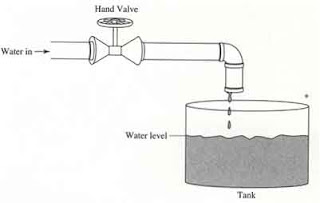i) plant/plant
ii) Input transducer
iv) output transducer/sensor
Advantages of closed-loop systems:-
i) Less sensitive to noise, disturbances and changes in the environment.
ii) Transient response and steady-state error can be controlled more conveniently and with greater flexibility in closed-loop systems, often by a simple adjustment of gain (amplification) in the loop and sometimes by redesigning the controller.
Disadvantages of closed-loop systems:
i) More complex than open-loop systems
ii) More expensive than open-loop systems.
The disadvantages of open-loop systems, namely sensitivity to disturbances and inability to correct for these disturbances, may be overcome in closed-loop systems. The generic architecture of a closed-loop system is shown in Figure 1 below.
Figure 1: Block diagram of closed-loop systems.
The input transducer converts the form of the input to the form used by the controller. An output transducer, or sensor, measures the output response and converts it into the form used by the controller.
The first summing junction algebraically adds the signal from the input to the signal from the output, which arrives via the feedback path, the return path from the output to the summing junction. In Figure 1, the output signal is subtracted from the input signal. The result is generally called the actuating signal. However, in systems where both the input and output transducers have unity gain (that is, the transducer amplifies its input by 1), the actuating signal's value is equal to the actual difference between the input and the output. Under this condition, the actuating signal is called the error.
The closed-loop system compensates for disturbances by measuring the output response, feeding that measurement back through a feedback path, and comparing that response to the input at the summing junction. If there is any difference between the two responses, the system drives the plant, via the actuating signal, to make a correction. If there is no difference, the system does not drive the plant, since the plant's response is already the desired response.
Advantages of closed-loop systems:-
i) Less sensitive to noise, disturbances and changes in the environment.
ii) Transient response and steady-state error can be controlled more conveniently and with greater flexibility in closed-loop systems, often by a simple adjustment of gain (amplification) in the loop and sometimes by redesigning the controller.
Disadvantages of closed-loop systems:
i) More complex than open-loop systems
ii) More expensive than open-loop systems.



